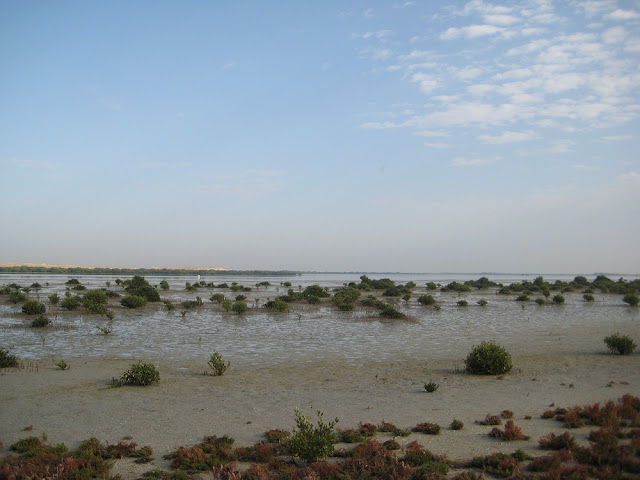12/3
Left our hotel in Eilat at 0600 and headed north to KM33 for one last try with the Asian Desert Wablers. Unfortunately we could not locate any of the two birds seen by others and had to settle for the trips first
Bar-tailed Desert Lark, a singing male. Continued north to Yotvata were KO located an
Oriental Lark which everybody saw at close range. Another good bird was a female
Namaqua Dove which only half of the group saw. Two group members lacked Hooded Wheatear on their life lists so we decided to give it a try at the sewage located one kilometre east of Shizzafon (Neot Samadar). Two hours of searching did not produce any wheatear but the sewage did have good numbers of
Isabelline Wheatears.
Continued our way northwest and stopped at KM59, Hameishar, which is a green spot in the desert. The area is a military area and you might get asked to leave if the military personel see you. Luckily for us they did not spot or at least they did not ask us to leave so we had two hours of excellent birding. The area holds good numbers of a great variety of larks, including Thick-billed (1) and Temminck’s (9 birds, several singing). This was also the area where we finally caught up with
Asian Desert Warbler. Two birds were seen at close range. One of the birds gasping in the immense midday heat (>35 degrees celcius).
The afternoon was spend birding Mitzpe Ramon which is a wintering site for
Syrian Serin. We saw two males in the small park near the football field. Other good birds included
Mourning Wheatear 3♂♂,
Redstart 2 ♂♂ of the race
samamisicus. Nubian Ibex come into the small town just east of the football field allowing very good photographic opportunities.
Slept in Kibbutz Mash’ Abbe Sade.
 |
| Oriental Lark at Yotvata |
 |
| Looking for Asian Desert Warbler. No luck at this minefield (KM33). |
 |
| Blackstart |
 |
| Blackstart |
 |
| Hot like hell! |
 |
| KM59 |
 |
| Roughtail Rock Agama (Laudakia stellio stellio) Mitzpe Ramon |
 |
| Nubian Ibex at Mitzpe Ramon |
 |
| Nubian Ibex at Mitzpe Ramon |
 |
| Nubian Ibex at Mitzpe Ramon |
























































